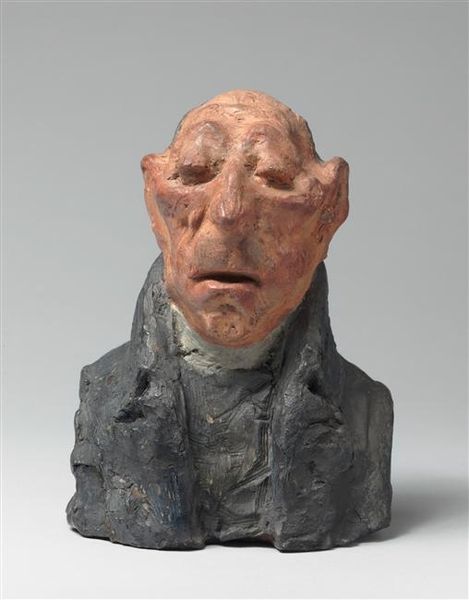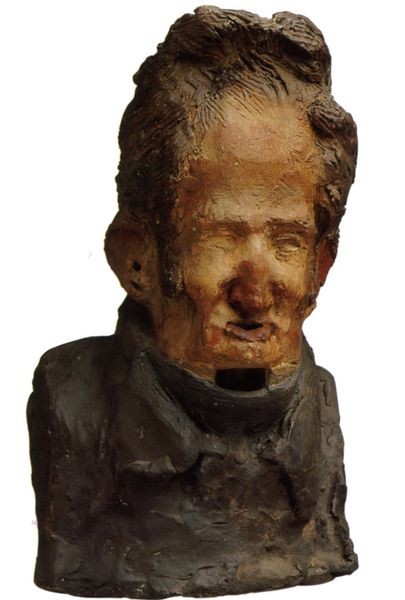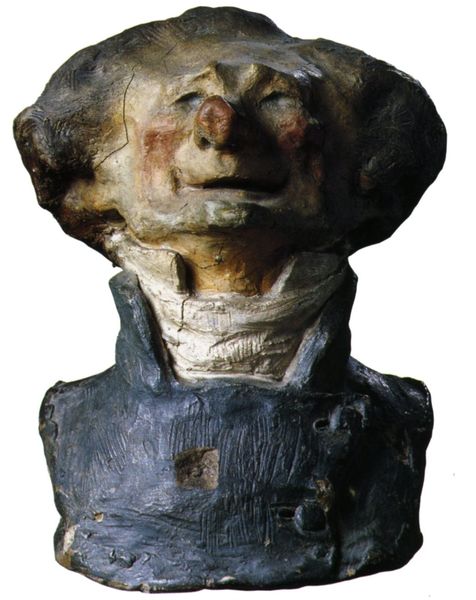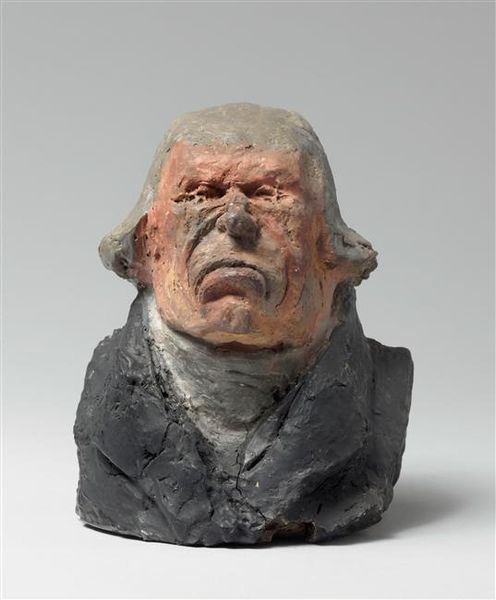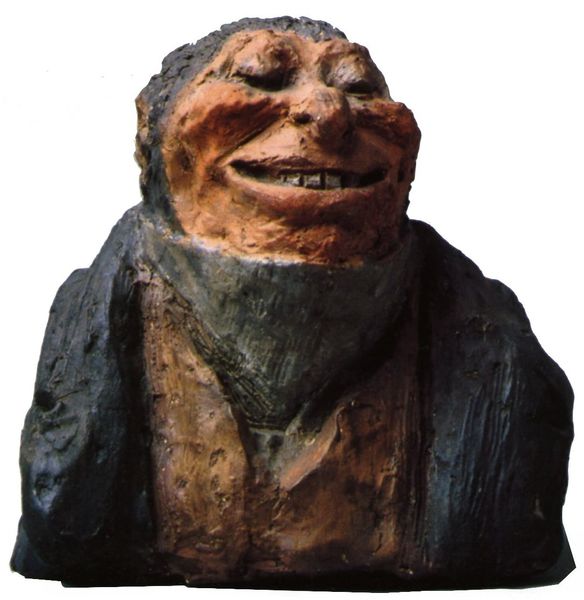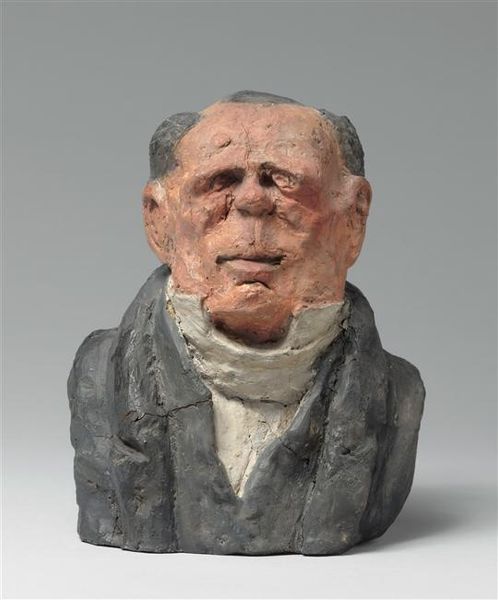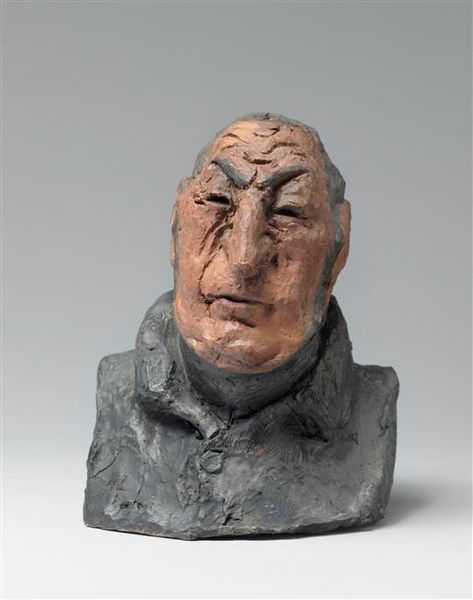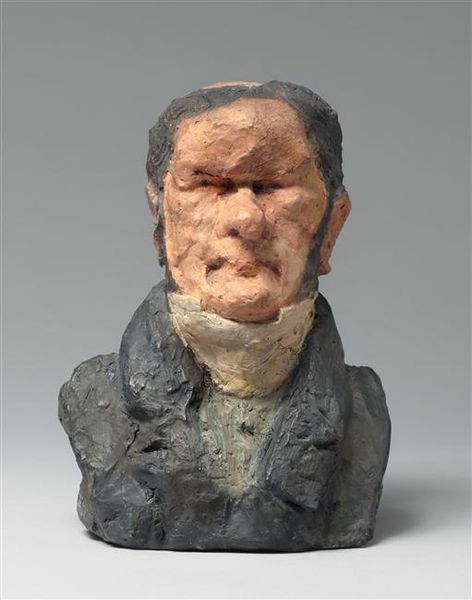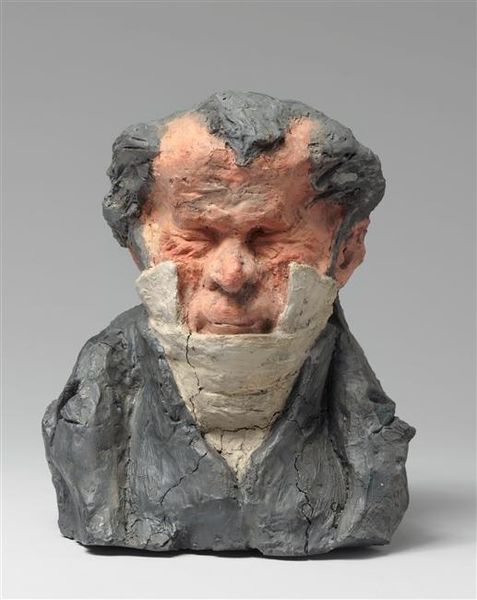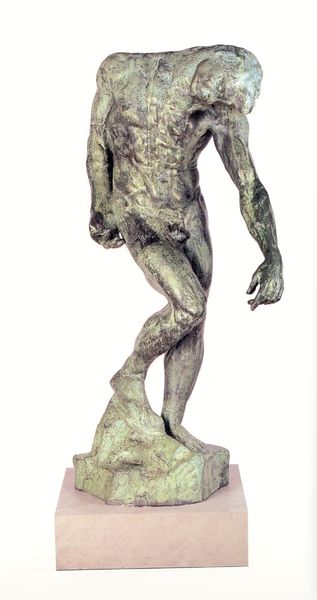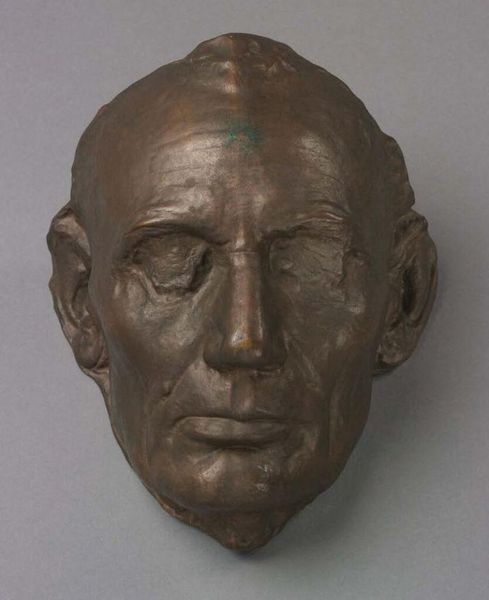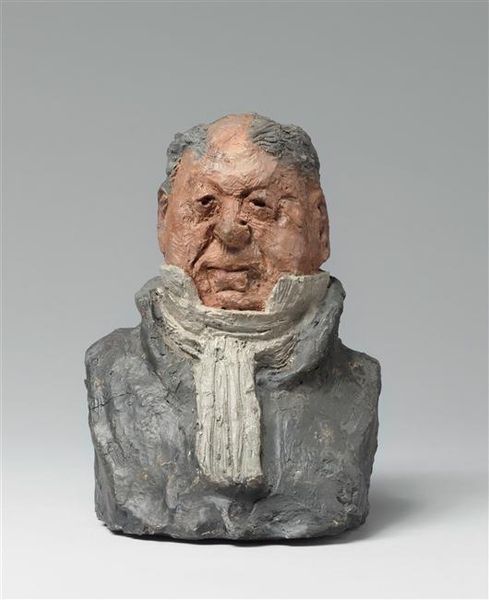
metal, bronze, sculpture, marble
#
portrait
#
neoclacissism
#
metal
#
bronze
#
sculpture
#
marble
Copyright: Public domain
Curator: This is Honoré Daumier's striking bronze bust of François-Pierre-Guillaume Guizot, created in 1833 and currently housed at the Musée d'Orsay. What’s your first impression? Editor: Foreboding, almost gothic. It feels more akin to a death mask than a celebratory portrait. There's a starkness to it. Curator: Daumier’s choice of bronze is interesting. The rough texture and dark patina contribute to that feeling you’re describing. The medium itself rejects the smooth idealization associated with more traditional marble portraiture of the time. This isn’t about classical representation, but about exposing a certain harsh reality. Editor: Precisely! It reads against the Neoclassical movement too, with its emphasis on perfect symmetry, balance, and heroic idealism. Guizot was a prominent figure, a historian and statesman, so his unflattering depiction here points to Daumier's critique of power. It really subverts the traditional function of portraiture in service of the elite. Curator: Considering the political climate of 1830s France, this makes sense. The July Revolution was recent history. Daumier was known for his caricatures, published in newspapers. This bust feels like a three-dimensional extension of that critical engagement. I wonder about the role of the artisan here too; Daumier would have had to wrestle with the physical material of the bronze, pouring it into the cast, manipulating it into this form. Editor: It begs the question of how Guizot himself reacted to this representation of him. It's such an indictment of bourgeois values, a commentary on the individual's complicity in maintaining unequal social structures, revealing him to be austere and judgmental, removed from everyday struggles. You can sense a tension brewing, this quiet yet palpable condemnation. Curator: Perhaps Daumier saw beyond Guizot’s public persona, capturing something about the moral and social failings of the French elite. It challenges us to re-evaluate our relationship with both the art object and the subject it depicts. Editor: Yes, it acts almost as an indictment against the man, the bronze itself serving to immortalize that moral judgement. Looking back at the period, that becomes an insightful commentary.
Comments
No comments
Be the first to comment and join the conversation on the ultimate creative platform.

